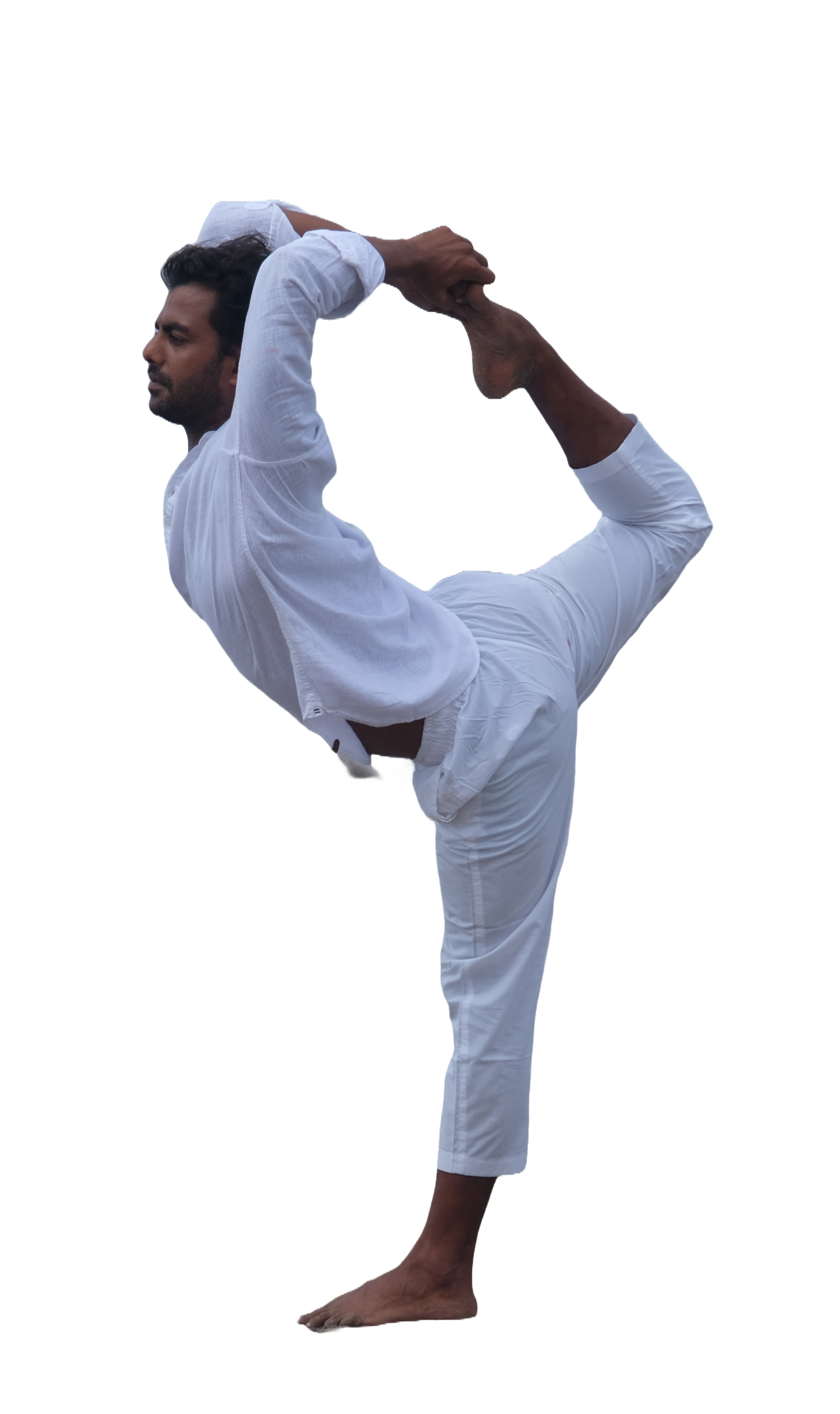Discover the Path to Inner Bliss: Explore the Eight Limbs of Yoga for a Holistic and Joyful Life.
These eight limbs aren’t just some abstract concepts; they’re a set of practical steps that can guide us towards our full potential, both as individuals and as part of the greater cosmic whole. Sage Patanjali knew what he was talking about when he laid out these eight practices in the yoga sutras.
Each limb lays the foundation for the next, building upon the previous step to create a sturdy and stable structure for our growth. So, what are these limbs? They include everything from ethical guidelines and physical postures to breath control and meditation. With each limb, we delve deeper into our inner selves, cultivating greater awareness and understanding of ourselves and the world around us. And the ultimate goal? The highest state of awareness – a state of blissful union with the divine. It’s a journey worth taking, and the Eight Limbs of Yoga are here to guide us every step of the way.
Bahiranga vs. Antaranga
Patanjali’s Ashtanga Yoga has two sets of practices: the inner practices (antaranga) and the external practices (bahiranga). The first five limbs, including yama, niyama, asana, pranayama, and pratyahara, are external practices that help shape our personal habits and the way we interact with the world. On the other hand, the remaining three limbs, dharana, dhyana, and samadhi, are the antaranga that take place in the deeper layers of our consciousness, paving the way towards a profound mental and spiritual transformation.
1. The Yamas – Social guidelines
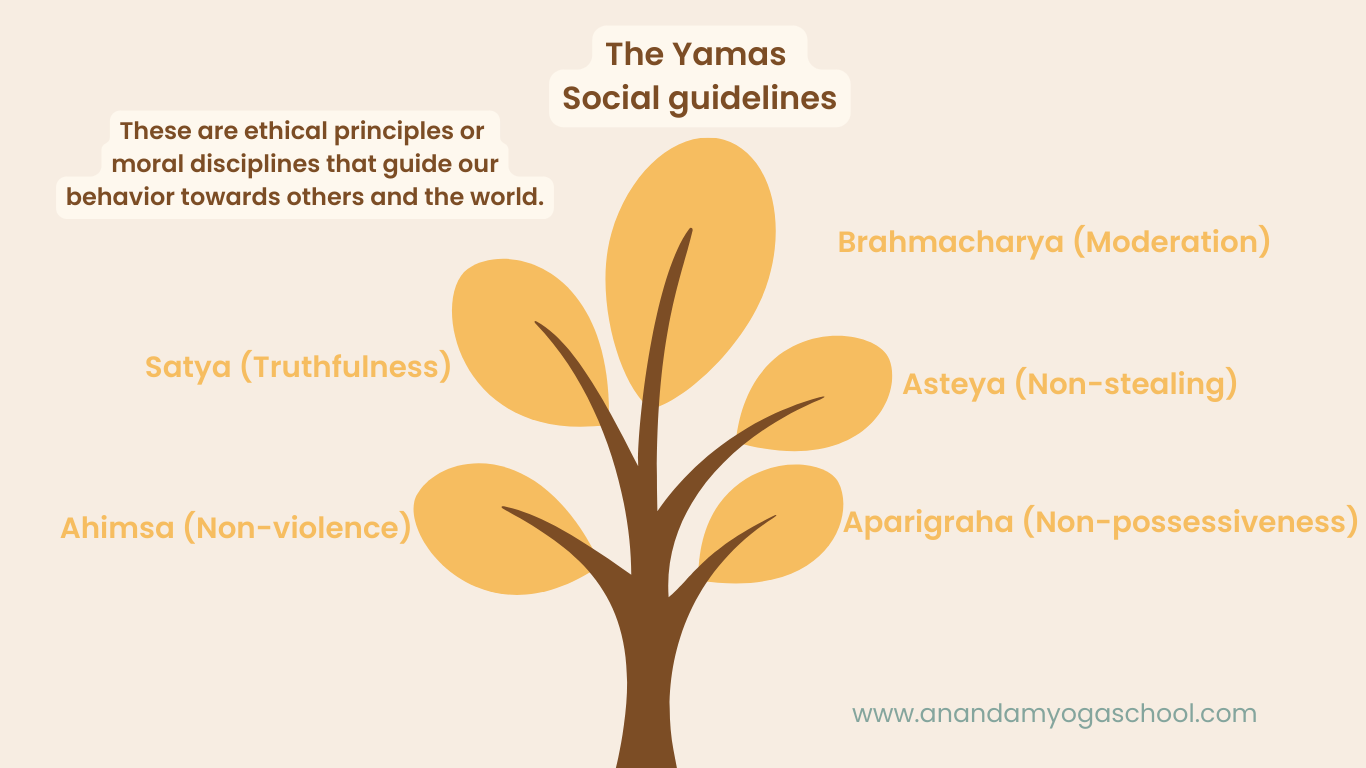
Unlock the power within by mastering the first limb of Yoga: The Yamas. Derived from the ancient Yoga Sutras, these five sacred principles ignite the flame of self-control within us. They serve as a compass for our actions, guiding us to lead a life of integrity and harmony with the world around us.
Ahimsa
Is all about non-violence – not just physical violence but also the violence that we inflict upon ourselves through toxic thoughts and behaviors.
Satya
Teaches us the power of truth – both personal and universal truth. Embracing truth allows us to accept the world around us with love and compassion, while also inspiring others to do the same.
Asteya
Reminds us not to take what isn’t rightfully ours. It goes beyond material possessions to include stealing someone’s joy or peace through our words and actions.
Brahmacharya
Often misunderstood as just celibacy, has become a forgotten concept in our modern culture. However, when we translate it as ‘right use of energy,’ it becomes more relevant than ever. We live in a world where we are constantly bombarded with external desires, trying to impress others, and pushing ourselves further and further to be better, stronger, and skinnier. But in between all the noise, we forget to ask ourselves what we really want and where we want to direct our energy. Brahmacharya encourages us to look inward, to take a step back from the external chaos and focus on what truly matters. By saving our energy for what’s important, we can lead a more fulfilling life.
Aparigraha
Encourages us to let go of our attachment to material possessions and outcomes. By practicing non-possessiveness and letting go of jealousy and the need to control every aspect of our lives, we can live a simpler but more fulfilling life.
2. Niyamas – personal guidelines
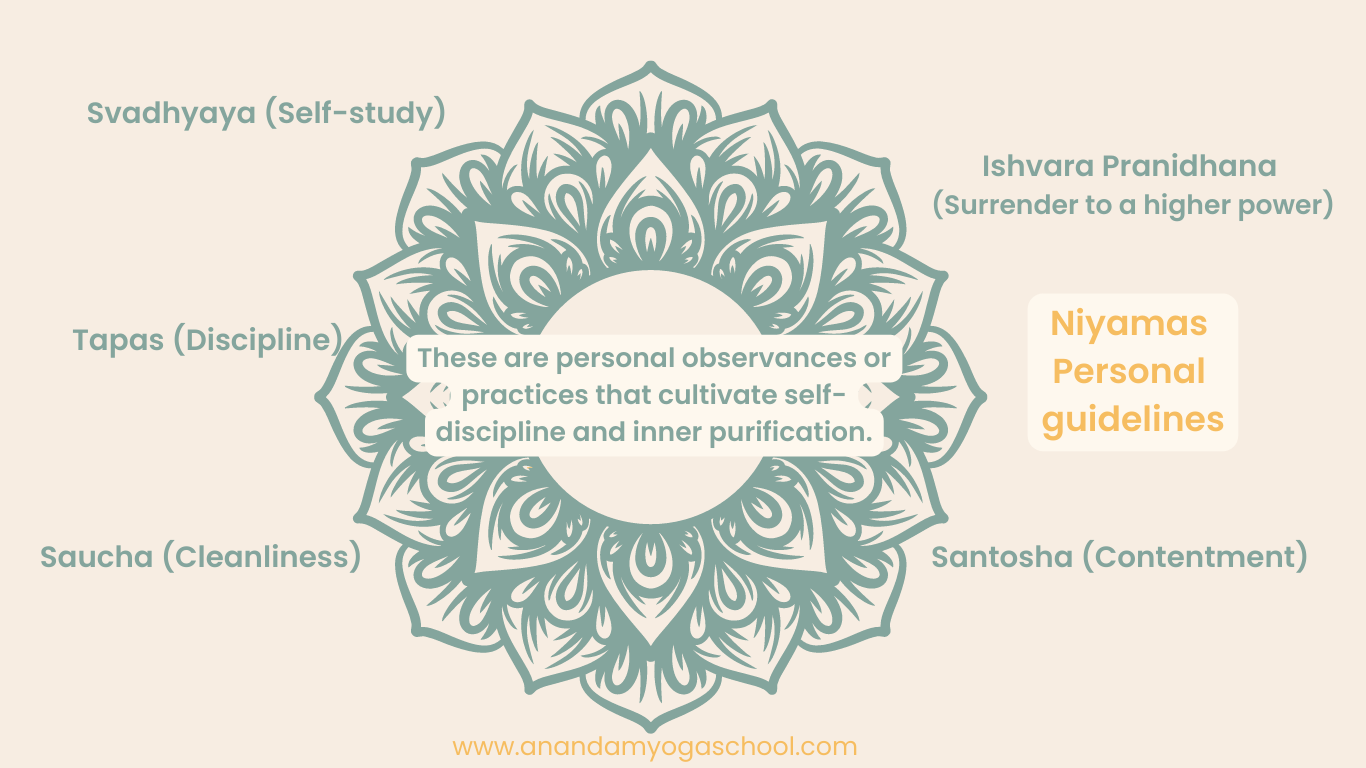
In the journey of yoga, the Yamas serve as the compass to navigate how we interact with the world around us, while the Niyamas guide us in the exploration of the inner landscape of ourselves. The Niyamas are the second limb of the Eight Limbs of Yoga. Here, we delve into the creation of personal habits that lead us to a more purposeful and fulfilling life. It’s like having a personalized guidebook to our own spiritual growth, revealing the secrets to cultivate self-love, contentment, and inner peace.
Saucha: Purifying the Body, Mind, and Soul
In the yoga sutras, the concept of saucha goes beyond just physical cleanliness. It encompasses mental and intentional purity as well. From keeping a clean and tidy home to using mantras and mindfulness to cultivate a positive mindset, saucha teaches us to set aside time and effort for purifying ourselves in all aspects of life. By starting with inward observations, we can expand this practice of purity and cleanliness to every area of our lives.
Santosha: Discovering Happiness in the Present
Santosha is the practice of being content with what we have in the present while working towards a goal or purpose. By cultivating a habit of gratitude and finding joy in everything, we can stay grounded and eventually reach enlightenment. The yoga sutras guide us towards developing this habit of thankfulness, which leads us to discover happiness in the present moment.
Tapas: Mastering Self-Discipline
With self-discipline, we can overcome unhealthy habits and keep our focus on our goals. This Niyama teaches us to control our senses and make better choices towards achieving our purpose. Sensual pleasures may tempt us, but with tapas, we can stay true to our purpose and overcome any obstacles.
Swadhyaya: Discovering Your True Self
Swadhyaya, or self-study, is the act of cultivating a deep sense of self and our core beliefs. We can find direction and purpose in life by asking questions like “Who am I?” and “What is my purpose?” The practice of Swadhyaya guides us towards self-discovery and self-awareness.
Ishvara Pranidhana: Surrendering to the Divine
Ishvara Pranidhana is the practice of surrendering our ego to the Divine, God, the Universe – what ever you want to call it. By understanding our purpose and how we relate to the world, we can connect with the Divine and surrender ourselves to its plan. This final niyama is about recognizing the beautiful interconnection of all things and celebrating our connection to the Divine.
3. Asana – physical postures
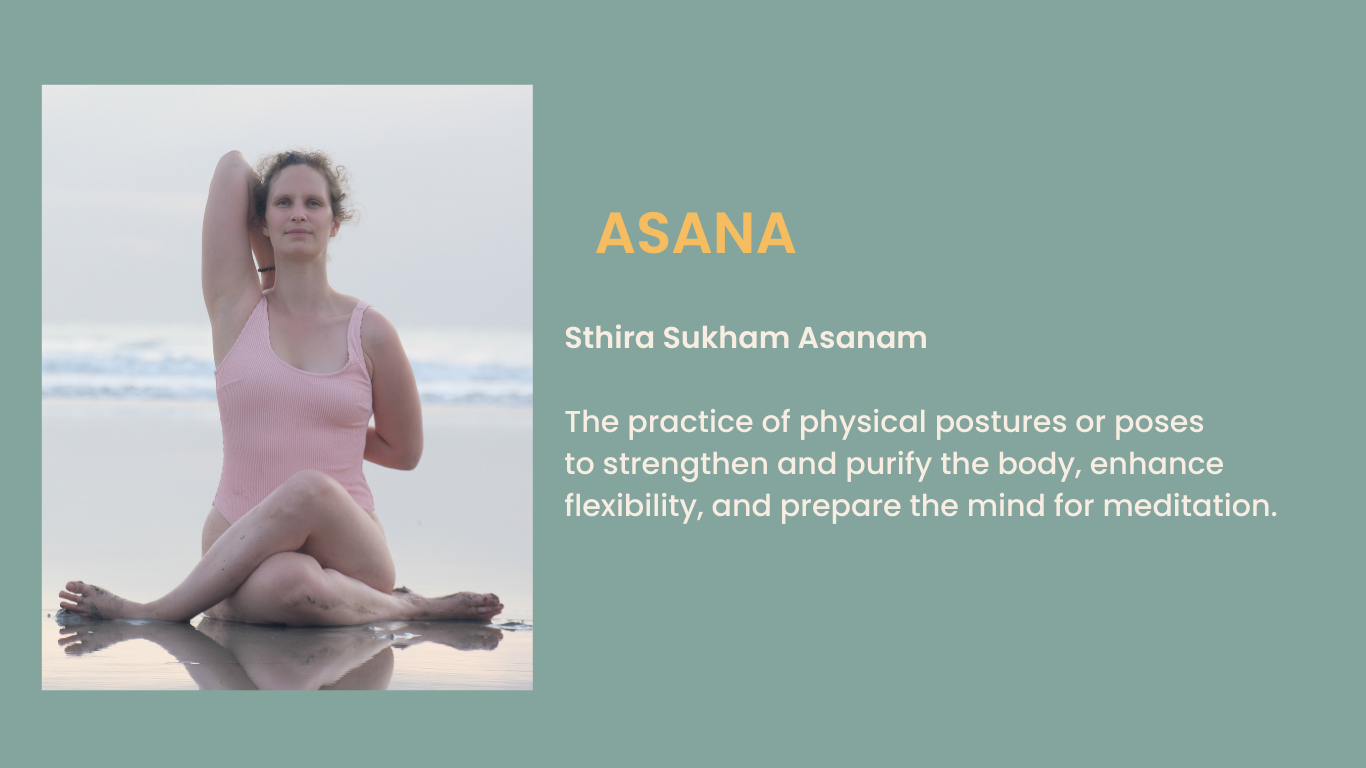
The third limb of yoga is where the body meets the mind – through the physical practice of yoga poses, or asanas. While many may associate yoga solely with physical exercise, it is important to remember that asana practice is just one part of the yogic journey.
In the yoga sutras, the phrase “Sthira Sukham Asanam” embodies the essence of asana practice: finding a steady and comfortable seat in each pose. This means not only achieving physical balance and ease, but also cultivating a steady and focused mind.
Beyond the physical benefits, the asanas serve as a means of purifying the body and preparing it for deeper exploration of the other limbs of yoga. So the next time you unroll your yoga mat, remember that the physical practice is just one step on the path to a more balanced and harmonious existence.
4. Pranayama – the expansion of life-force

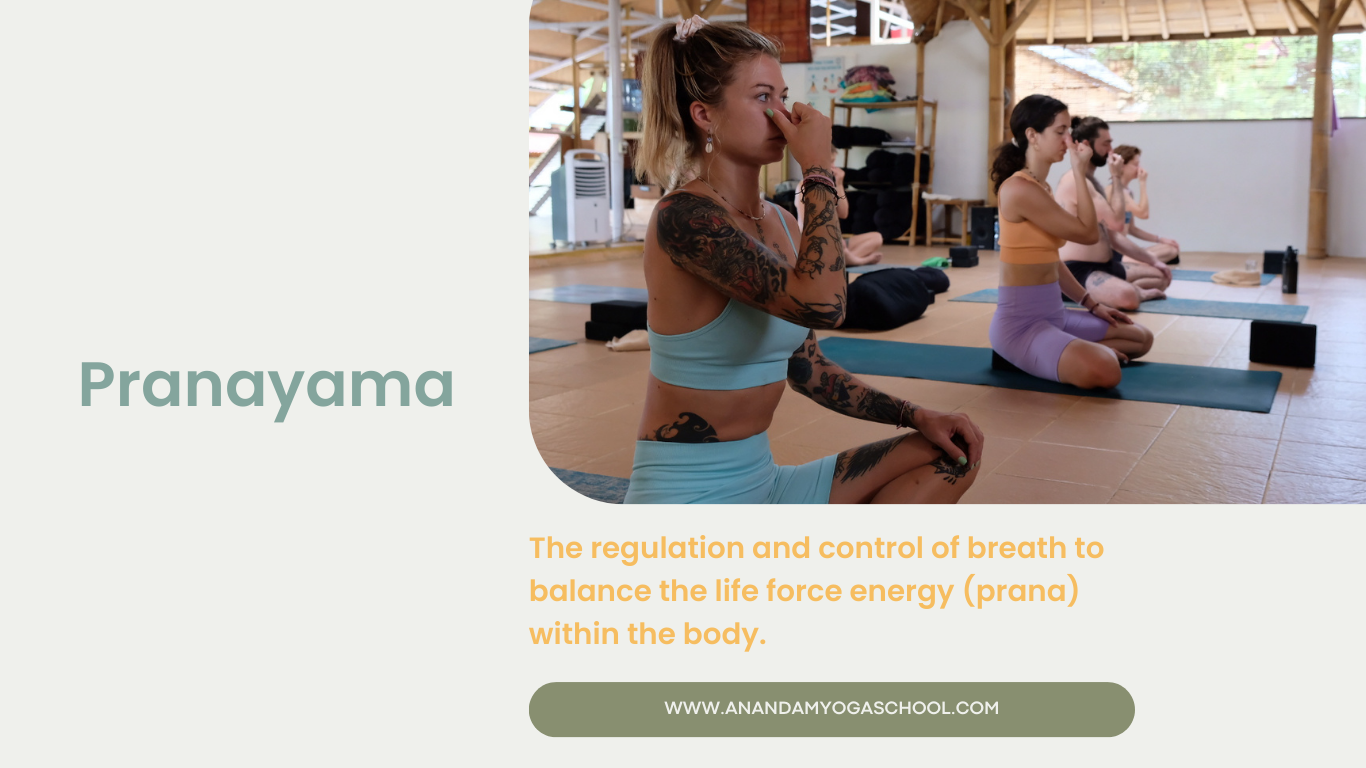
Imagine feeling a rush of energy coursing through your body, revitalizing and harmonizing every system within you. That’s the power of Pranayama, the fourth limb of yoga. Pranayama is all about tapping into and expanding your life force energy, or prana, through the conscious control of your breath.
By practicing different Pranayama techniques, you can purify your energy body and increase your capacity to carry prana. This vital force is what fuels your physical and mental activities, from speaking to digesting to thinking. Pranayama helps you to find balance between the left and right hemispheres of your brain, promoting harmony and coherence.
5. Pratyahara – the withdrawal of senses
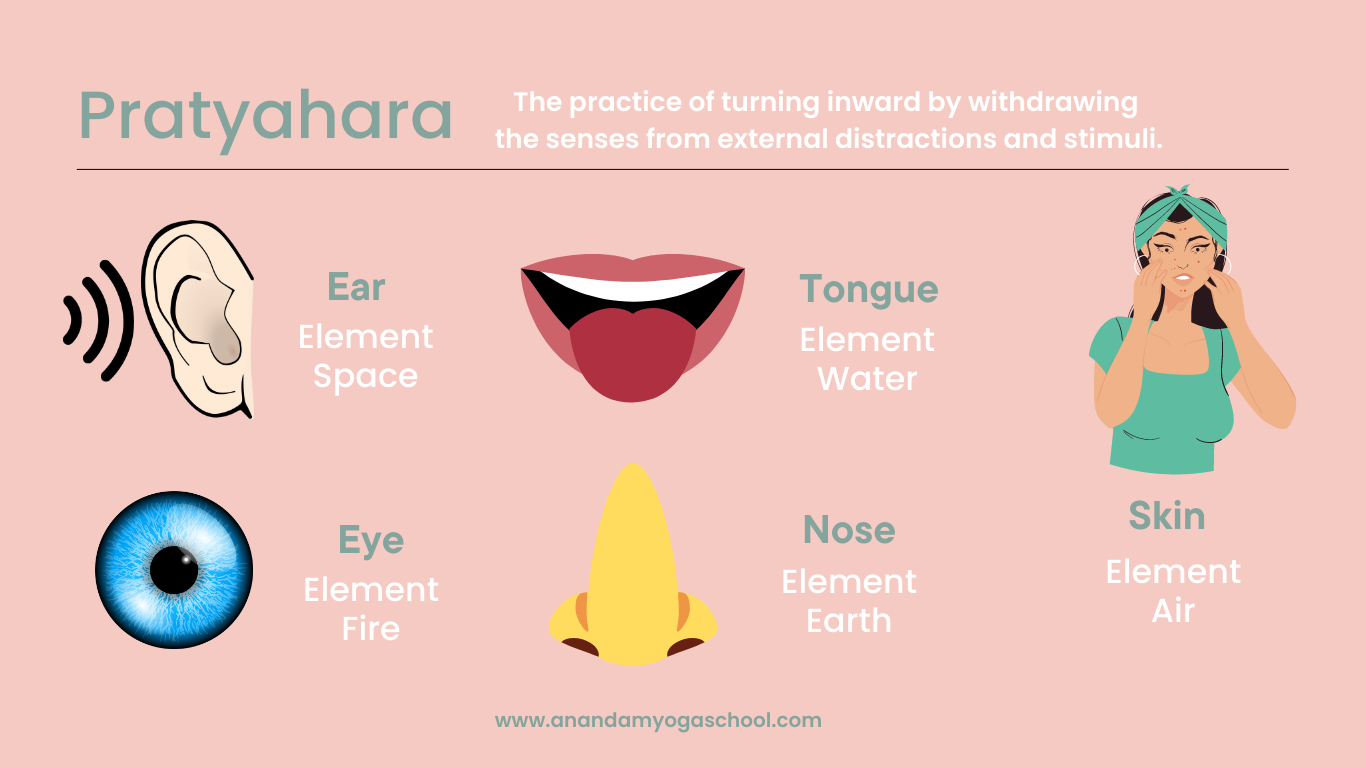
The fifth limb of yoga, Pratyahara, invites us to step back from the constant stimulation of the senses and seek a more peaceful state of being. It’s all too easy to get caught up in the noise and distractions of the world around us, but by practicing Pratyahara, we learn to use our senses in a more mindful way, tuning out unnecessary stimulation and finding calm amidst the chaos.
Pratyahara can take many forms, from closing the eyes during meditation to using breathing techniques like brahmari pranayama to quiet the mind.
The yoga sutras teach us that by calming the senses and focusing our attention inward, we can gain greater control over our mind and emotions, paving the way for deeper meditation and spiritual growth.
6. Dharana – The power of concentration

Imagine your mind as a wild animal, untamed and uncontrolled. It jumps from thought to thought, distracted and unfocused. This is where Dharana comes in, the art of concentration and training the mind to focus on a single object or thought.
Just like a wild animal, our minds need to be tamed before we can enter the depths of meditation. By practicing Dharana, we learn to fixate our minds on one single point, be it our breath, an object or a mantra. And just like taming a monkey, we must bring our minds back to that point when it inevitably wanders away. Through this process of constant refocusing, we learn to control our minds and bring them to a state of stillness – where meditation begins.
7. Dhyana – Meditation
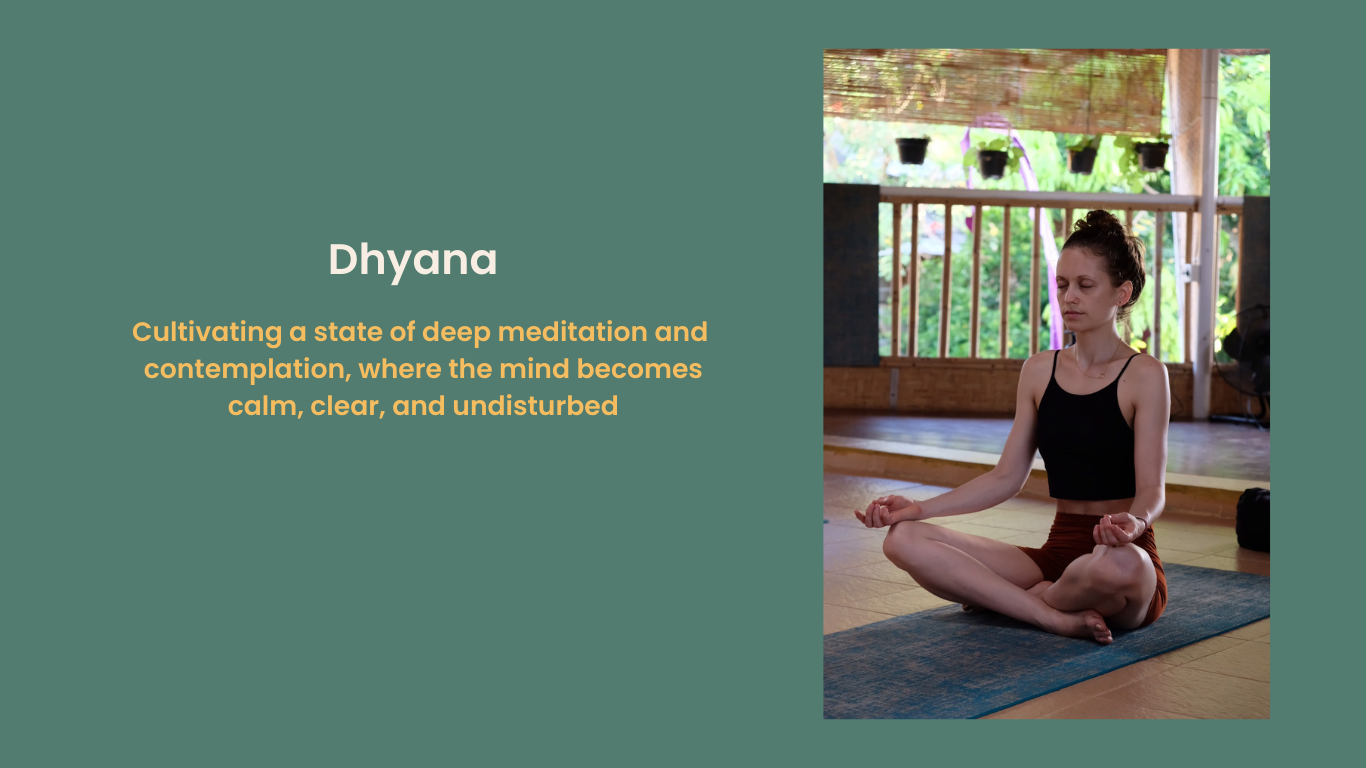
In dhyana, the flow of awareness gets longer and longer and we become absorbed in the focus of concentration. We no longer have to remind ourselves to keep the focus, there are no more distractions.
Imagine a calm lake on a still day, its surface as smooth as glass. That’s the kind of inner stillness that dhyana, or meditation, can bring. It’s a state of mind where distractions and disturbances have been
stilled, and you’re able to sink into a deep, tranquil state of being.
8. Samadhi – Contemplation
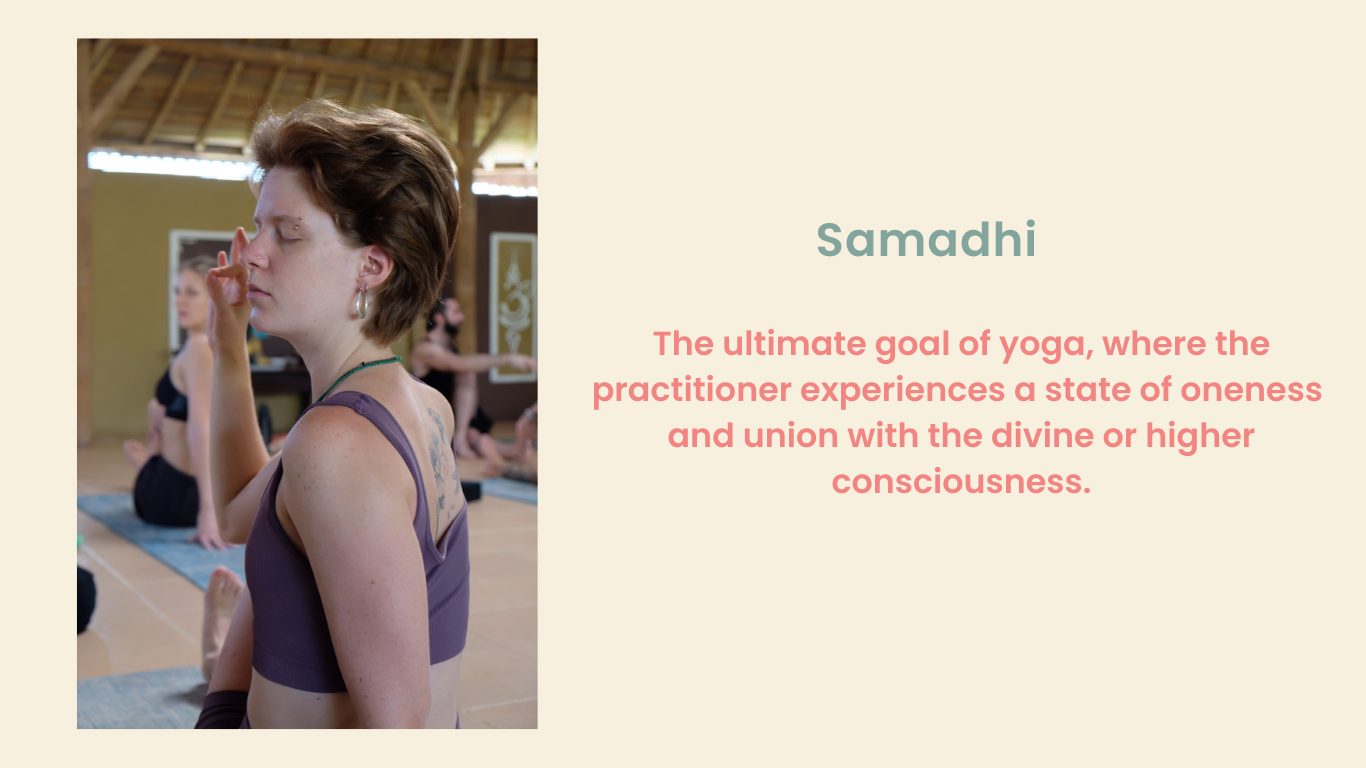

Samadhi is a state of mind where the boundaries of time and space disappear, and you become one with the universe – the ultimate stage of meditation. Your mind is free from all illusions, and you experience a profound sense of clarity and connection. You are no longer limited by the constraints of the physical world and instead, you comprehend the nature of your true self. This state of being is pure bliss.
The eight limbs of Yoga are a practical guide. They are there to be implemented into your life – guidelines to a happy and fulfilled life, a life aligned with what really matters.
It can be difficult to find a starting point and we are more than happy to help you with that. You can join one of our retreats in Germany, where we dive deeper into the Eight limbs of Yoga and give you tips on how to incorporate them into your daily life step-by-step.
In our 200 h Yoga teacher training Bali and our 200 h Yoga teacher training Germany we also dive deeper into Patanjali’s Yoga sutras.


